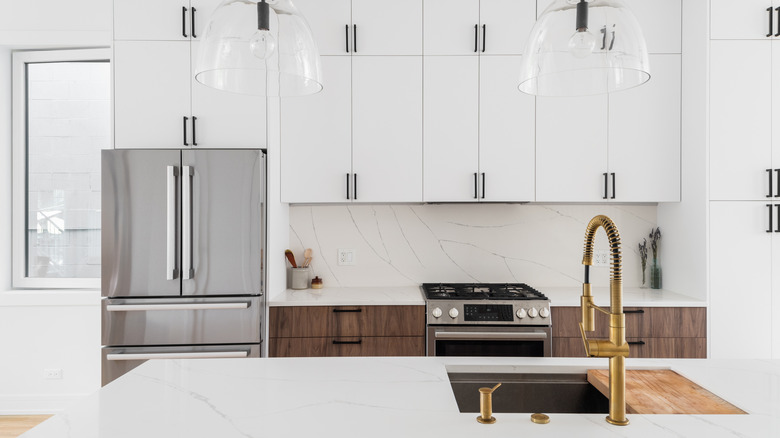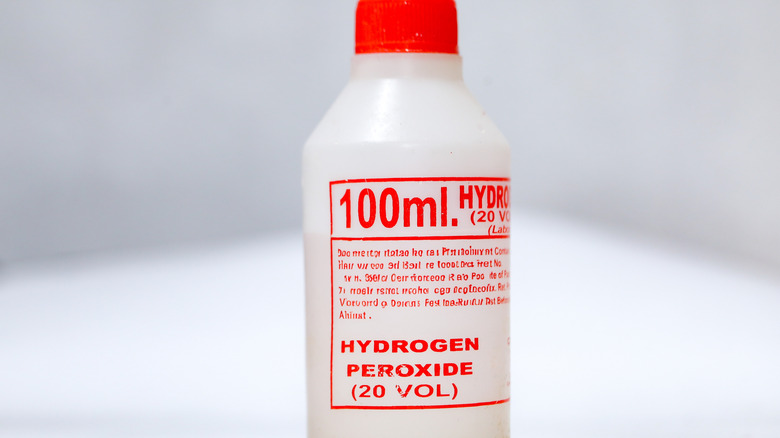The Key To Sparkling Clean Kitchen Countertops Is Hiding In Your Medicine Cabinet
If you are someone who appreciates using natural cleaning products, then you probably already know there are a lot of common household ingredients you can use to clean your kitchen. You've probably already mastered vinegar to clean your windows and baking soda to scrub your sink. You may even already know the lemon hack that will stop your garbage disposal from smelling. However, there is one product that might be in your bathroom you probably haven't even considered — hydrogen peroxide.
Hydrogen peroxide is basically water with an extra oxygen atom, but that absolutely doesn't mean it's safe to drink. But it does act like bleach's long-lost sibling due to its disinfecting and oxidizing abilities. Hydrogen peroxide has the ability to not only disinfect surfaces (killing all kinds of nasty germs) and deodorize, but also lift stuck-on grime like a pro. And when you combine it with baking soda, you have a powerful cleaning duo. It's a perfect alternative for those who don't tend to keep vinegar in their pantry, since it's very likely you have hydrogen peroxide hanging out in your medicine chest. Hydrogen peroxide is one of those natural cleaning ingredients that you'll want a healthy stock of in your home. It's extremely versatile and can be used to clean a multitude of things around the house, not just your kitchen countertops.
How to clean your countertops with hydrogen peroxide and baking soda
First, you will want to gather all of your supplies: A microfiber cloth, some baking soda, a clean spray bottle, and, of course, your 3% hydrogen peroxide. You will lightly spray the hydrogen peroxide onto your countertops, making sure that the area with stuck-on grime is completely covered. Next, sprinkle a small amount of baking soda over the wet surface to form a paste. Allow the paste to sit for a few minutes for optimum effectiveness. Using your microfiber cloth, scrub in a circular motion to allow the baking soda's mild abrasiveness to lift any dirt or stuck-on messes. After you have cleaned the surface, rinse with water, and dry with a second microfiber cloth or towel.
It's important that you do not mix this solution with any other cleaners like vinegar, bleach, or ammonia, as it can create dangerous chemical reactions. Also, opt for only the 3% concentration for cleaning, as higher concentrations can be dangerous to handle. It's also a good idea to try this cleaning mixture on a small part of your countertop before using it to make sure it doesn't cause any discoloration for your particular countertop material. This solution is safe for many countertop materials, but it is better to be safe than sorry. Because of its oxidizing ability, it can bleach cloth as well, but a quick rinse would dilute the solution and prevent any damage. You can use this solution whenever you are doing your regular kitchen routine because of how gentle it is.

